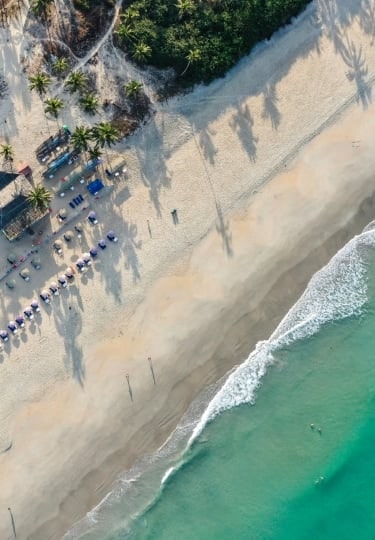Hippies have long been drawn to Goa, lured by the laid-back vibe and a seemingly endless string of gorgeous golden beaches along 99 miles of coastline. The best beaches in Goa have their own personality and style, known for their restaurants, watersports, yoga scene, or wildlife.
More recently, Goa has become a haven for digital nomads and remote-working entrepreneurs escaping India’s busy cities in search of a quieter life, giving rise to a young, creative community. There’s a strong emphasis on wellness, spirituality and alternative culture here, from sunrise yoga classes to juice bars, meditation sessions, bongo drums at sunset, and hippie craft markets.
However, it’s the beaches that are the star. Here are 12 of the best beaches in Goa to explore.
Baga Beach
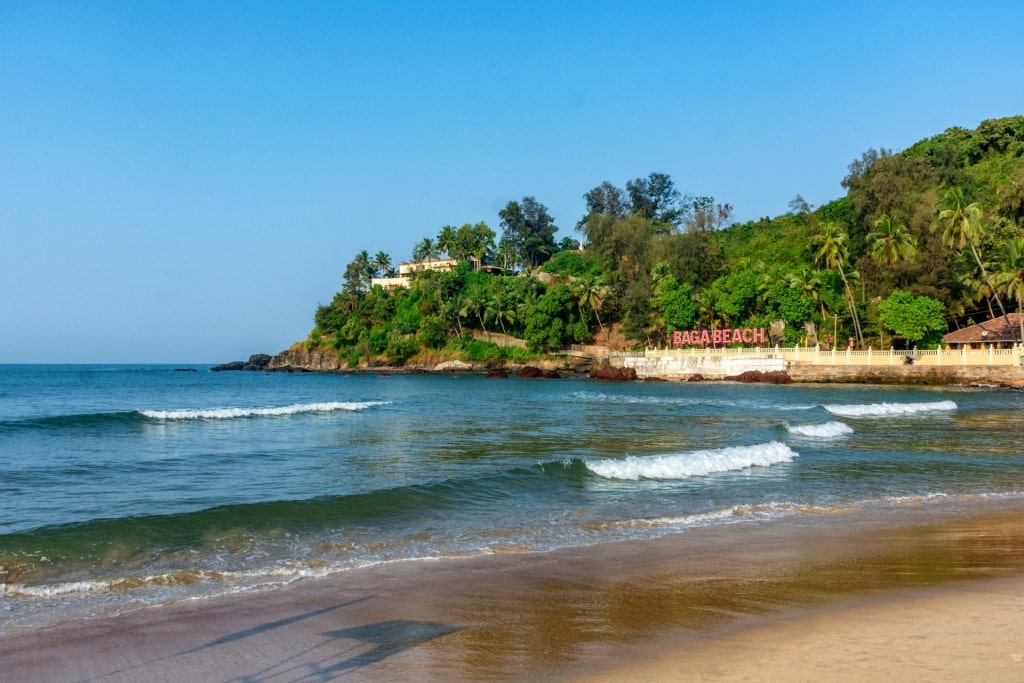
Baga Beach
Buzzing Baga Beach in the north of Goa is a popular spot known for its watersports as well as its high-end dining and busy nightlife scene. You can find any number of water toys to rent here, from kayaks to paddleboards, wakeboards, and jet skis. Or just set up camp on a sun lounger and people-watch.
Baga Beach is regarded as one of the best beaches in Goa for food. Restaurants here serve all manner of international and Goan dishes, catering to a sophisticated clientele who flock to the beach on weekends from Panaji, the state capital, a 35-minute drive to the south.
Goan cuisine is intriguing in that it blends Portuguese with Indian influences. So as well as fish curry with rice—a staple here—you could try vindaloo, which is pork cooked with vinegar and fragrant spices, or choriz, a spiced pork sausage served with pao, or soft bread.
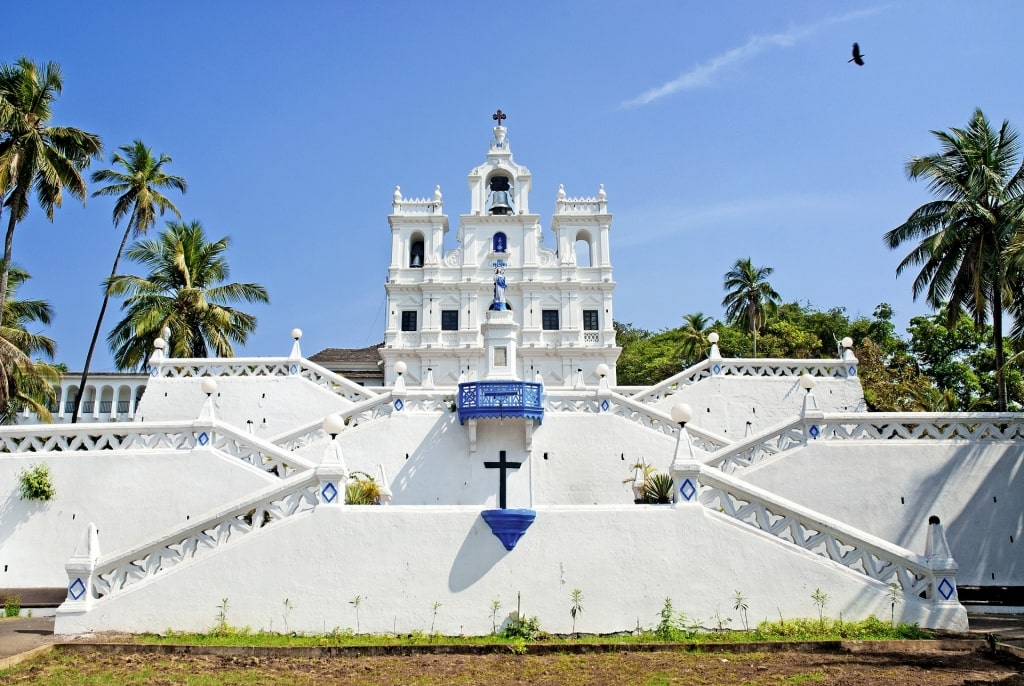
Panaji
If you’re visiting Baga or its neighbor, Calangute, take time away from sunbathing to explore the crumbling charm of Panaji. The state capital spills over a lush hillside to the mouth of the Mandovi River. In town, you’ll find majestic churches, museums, and galleries for a dose of culture away from the beach.
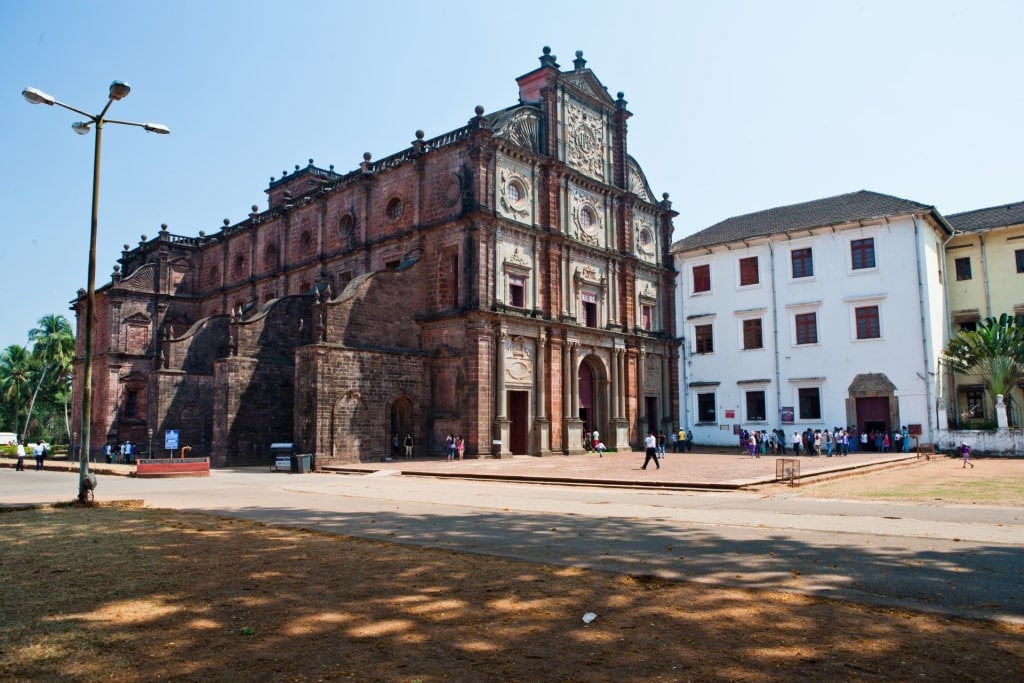
Old Goa
A short distance inland along the Mandovi River is Old Goa, where the Portuguese first settled, constructing a town on the banks. Although it was abandoned as Portugal’s Indian capital in the 17th century because of various disease epidemics, Old Goa today has UNESCO World Heritage Site status and is a peaceful place.
Spend time wandering slowly and gazing at the baroque cathedrals and stately convents, surrounded by green lawns and tropical flowers.
Calangute Beach
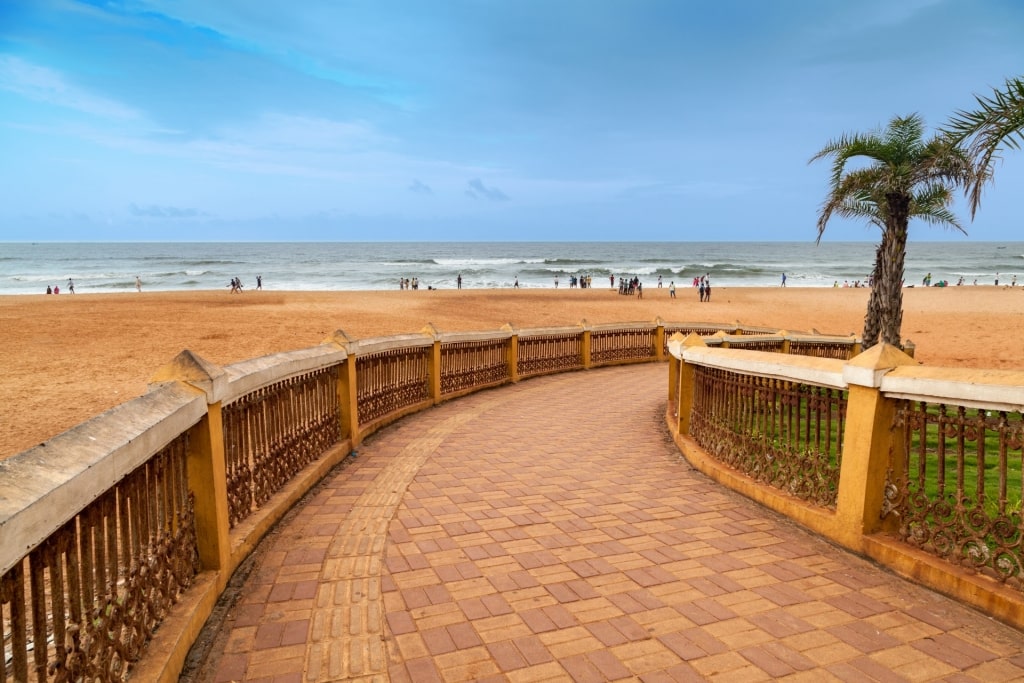
Calangute Beach
The five-mile Calangute Beach merges into lively Baga Beach and gives the latter a run for its money as one of Goa’s top watersports and music bar hotspots.
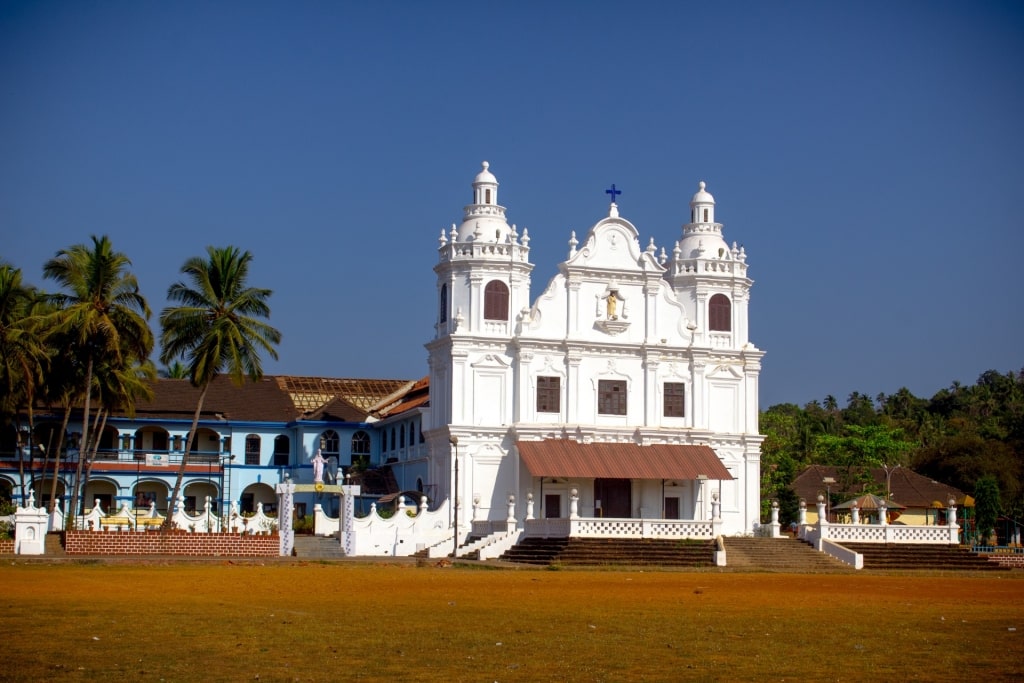
Church of St. Alex
Like most of Goa’s beaches, Calangute had humbler origins as a fishing village. The Portuguese built stately convents and churches—a quarter of Goans today are Christian—so make a point of visiting the snow-white, 400-year-old Church of St. Alex.
Then the hippies arrived in search of hedonism and healing. At nearby Mottant, there are hot springs believed to have medicinal properties, which draws locals and visitors today.
All these distractions aside, Calangute is a place for basking in the sun, venturing into the water, and retreating to a beach shack for fresh seafood and ice-cold beer.
For rustic charm and Goan seafood specialties, try the family-run Pousada by the Beach, where tables and chairs are set up on the sand and the cocktails are hand-made from fresh ingredients.
Morjim Beach
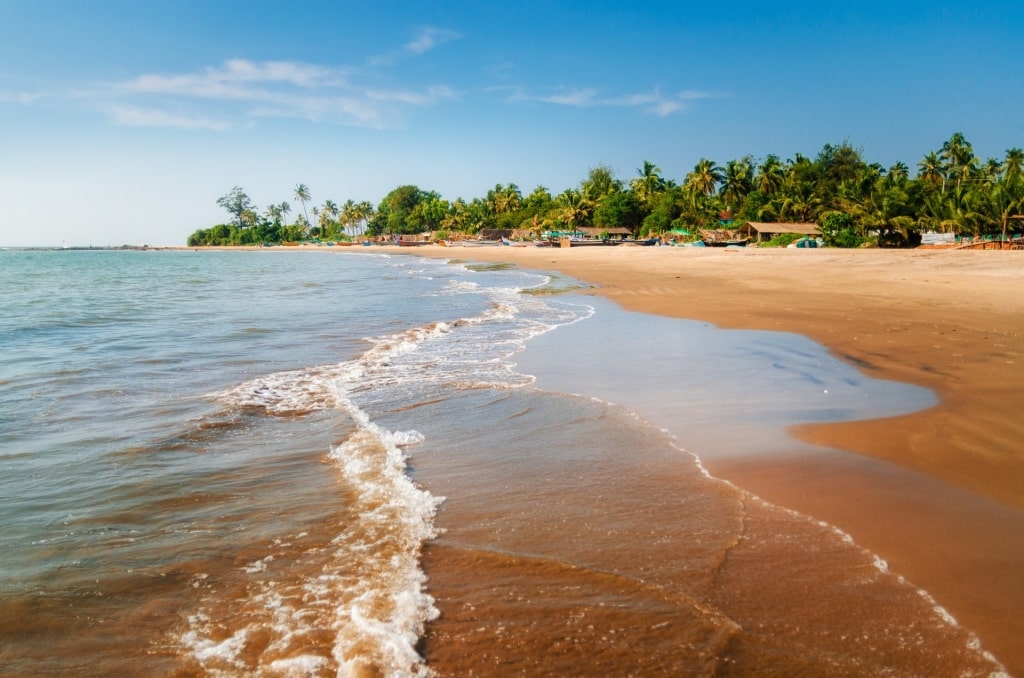
Morjim Beach
Morjim Beach, in the more developed north, is one of Goa’s top spots for watersports. There are surf schools here providing lessons for all levels, and for the more experienced, thrilling kite surfing.
You could see wildlife here, too. Olive Ridley turtles nest at Morjim, and when nests are found in the sand, local conservationists mark them to protect them. The birdlife is exceptional; look out for kingfishers, sand plovers, sandpipers, shrike and quill.
Dona Paula Beach
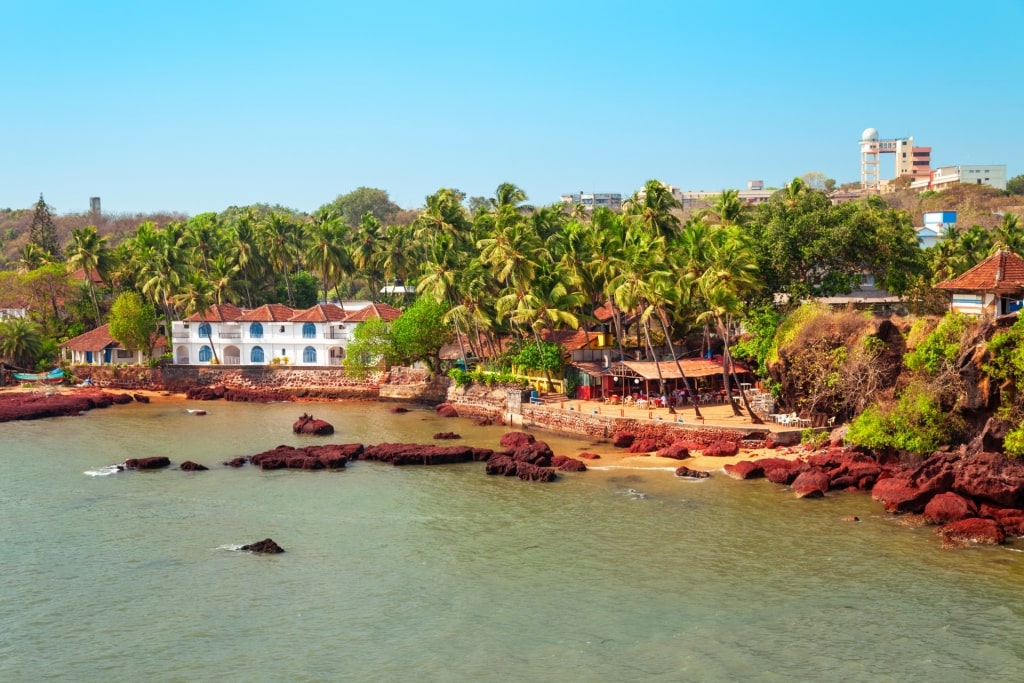
Dona Paula Beach
Close to Panaji, Goa’s capital, Dona Paula Beach is a lively spot known for its nightlife and daytime buzz of sun-lovers enjoying watersports and beach volleyball.
Dona Paula is located beneath a headland where two rivers, the Mandovi, on which the capital is built, and the Zuari flow into the sea. Despite its happy atmosphere, the beach also comes with a tragic (albeit fake) legend attached, which draws romantics to this beautiful spot.
Dona Paula was the daughter of a viceroy but was said to have fallen in love with a lowly fisherman. When her family objected to the affair, she jumped off the cliff, according to the story.
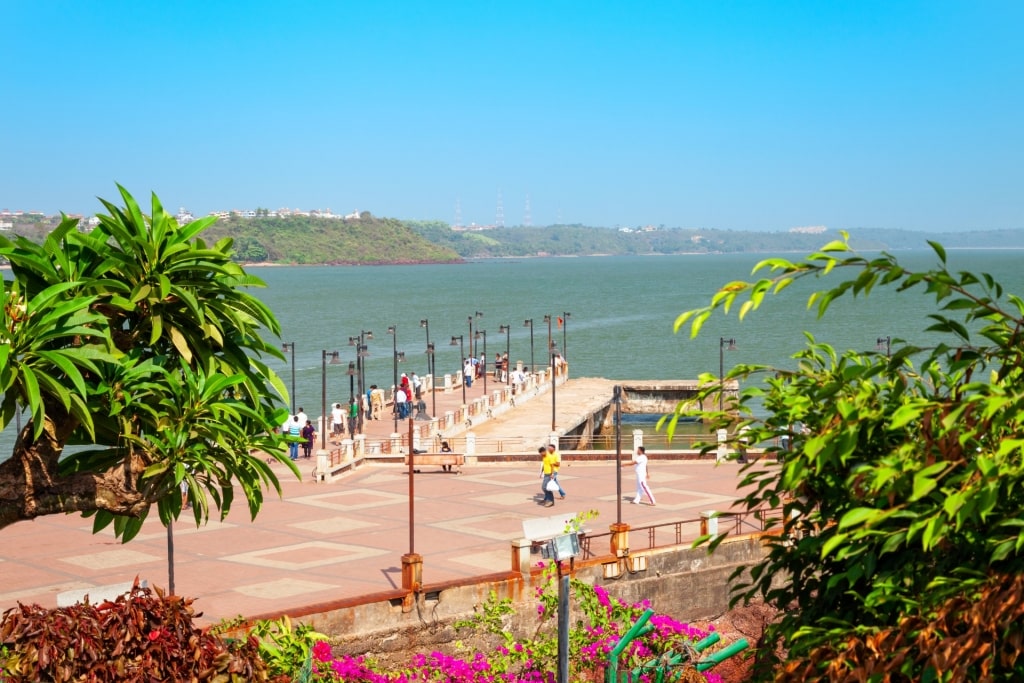
Dona Paula Beach
The reality is that the actual Dona Paula de Menezes was married to a Spaniard of noble descent and did a great deal for charity in the area, working with impoverished villagers. Such was her popularity that the village and beach were named after her following her death in 1782.
Whichever story you prefer, Dona Paula Beach is undeniably romantic, with gorgeous sunsets, and a long string of restaurants, bars, and boho shops selling authentic Indian souvenirs.
Colva Beach
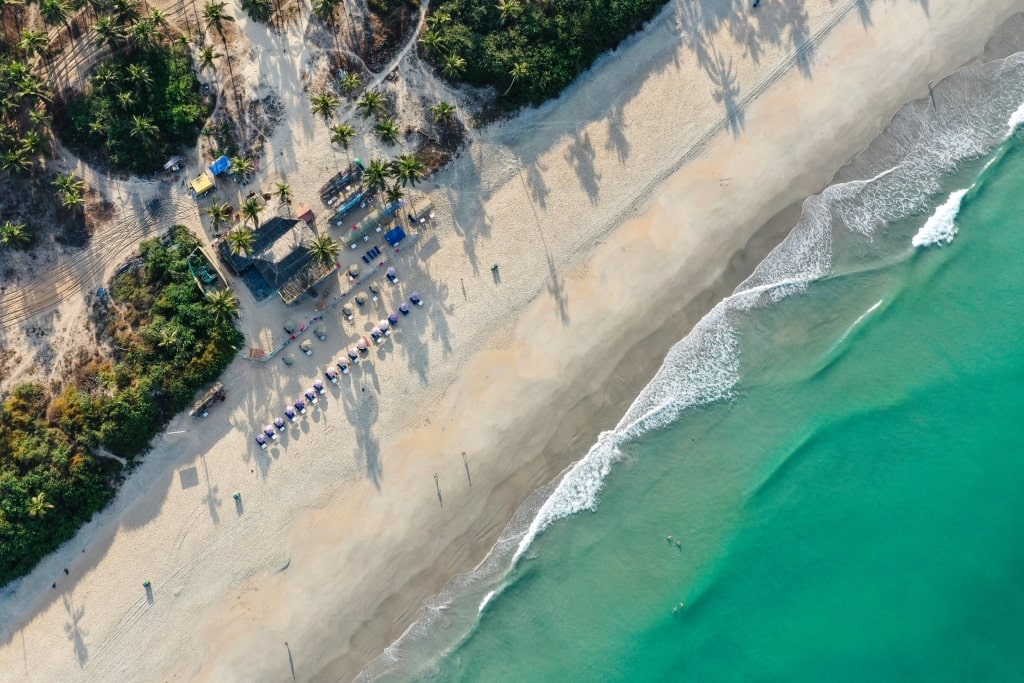
Colva Beach
Colva Beach, south of Panaji, is a mile-and-a-half section of a much longer beach of powdery white sand fringed by coconut palms.
This is a popular spot with locals, especially on weekends, and is less developed than some of Goa’s beaches. It’s more of a place for colorful beach shacks and food stalls than glitzy nightlife.
Brightly painted fishing boats pulled up on the sand simply add to the atmosphere. Away from the beach, there’s an impressive church, the whitewashed Our Lady of Mercy, built in 1630.
While you’re exploring Colva, head south a few minutes along the beach to Benaulim, a simple fishing village backed by coconut groves and emerald paddy fields. White sand beach and simple seafood shacks make this a great spot for a peaceful lunch and a swim.
Palolem Beach
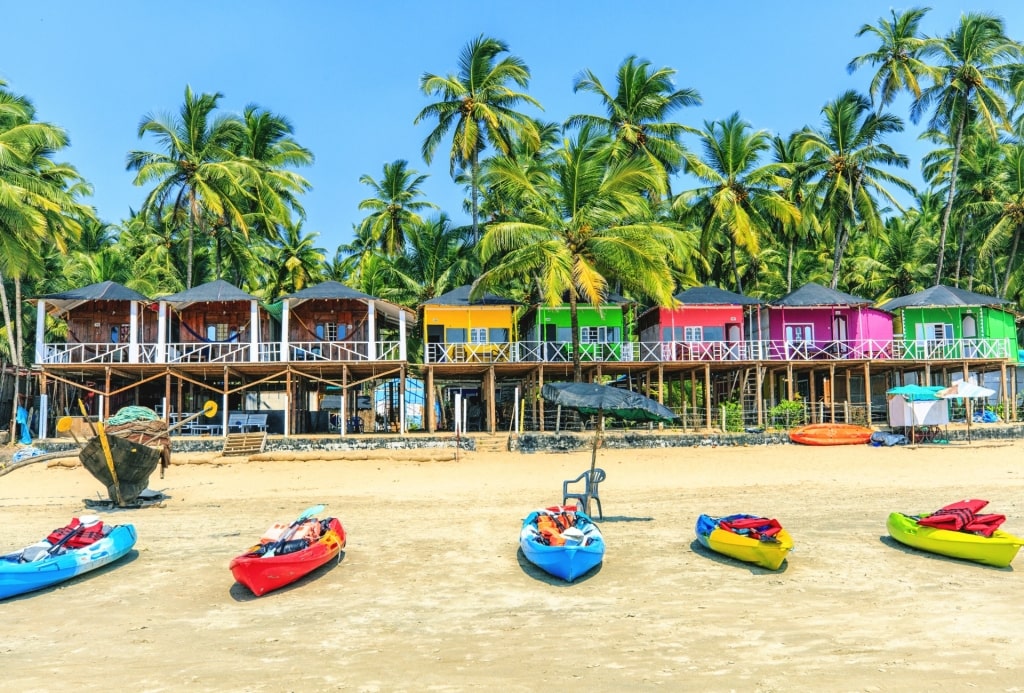
Palolem Beach
Crescent-shaped Palolem in the far south of Goa is a serene spot. Over a mile of golden sand is fringed by tall coconut palms, framed by tumbled boulders at one end and densely wooded hills at the other.
This is a beach for lazing, with a laid-back vibe and a row of beach shacks offering snacks and drinks. Rent a kayak and paddle across the bay, or set up on a lounger and simply sunbathe, swim, and repeat.
There’s a good chance of spotting dolphins either from the beach or out on a sightseeing boat, while the peaceful backwaters behind the beach are ideal for kayaking. If you’d like to try yoga, you’re in the right place, with several studios offering classes for all levels.
Butterfly Beach
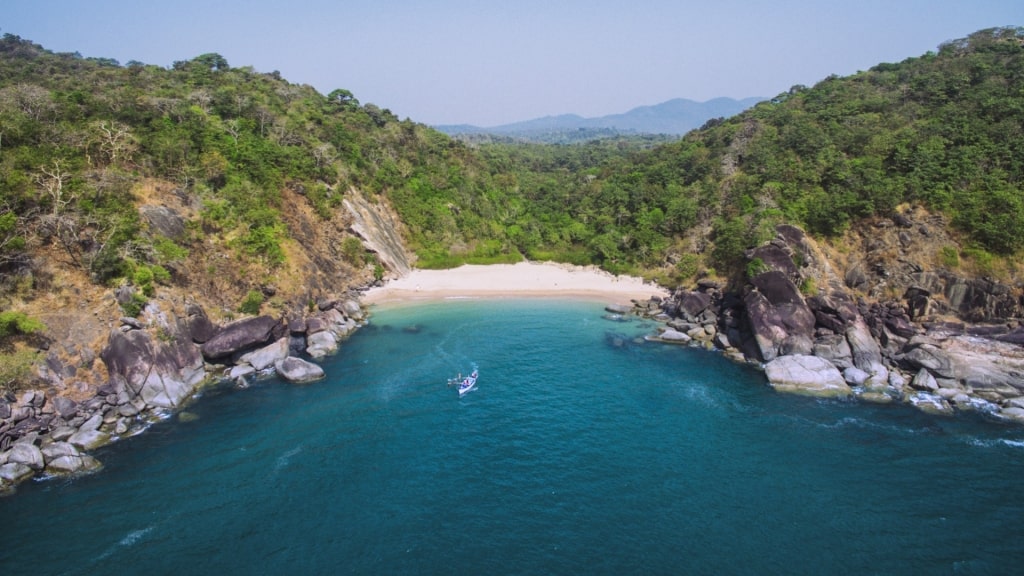
Butterfly Beach
A little half-moon of pale gold sand fringed by steep, wooded hills, Butterfly Beach, north of Palolem Beach, is worth the fairly challenging scramble through the forest. An easier way to get to this exquisite spot is by boat from Palolem.
Once you’re installed on the sand, there’s almost a sense of being in a fairytale. You may well see brilliantly colored butterflies flitting around while dolphins cruise the bay.
Take a break from lounging for a dolphin-spotting trip or a jaunt in a kayak. You’ll need to take provisions as Butterfly Beach is very quiet and blissfully undeveloped. It is, however, one of the best beaches in Goa for complete escapism.
Patnem Beach
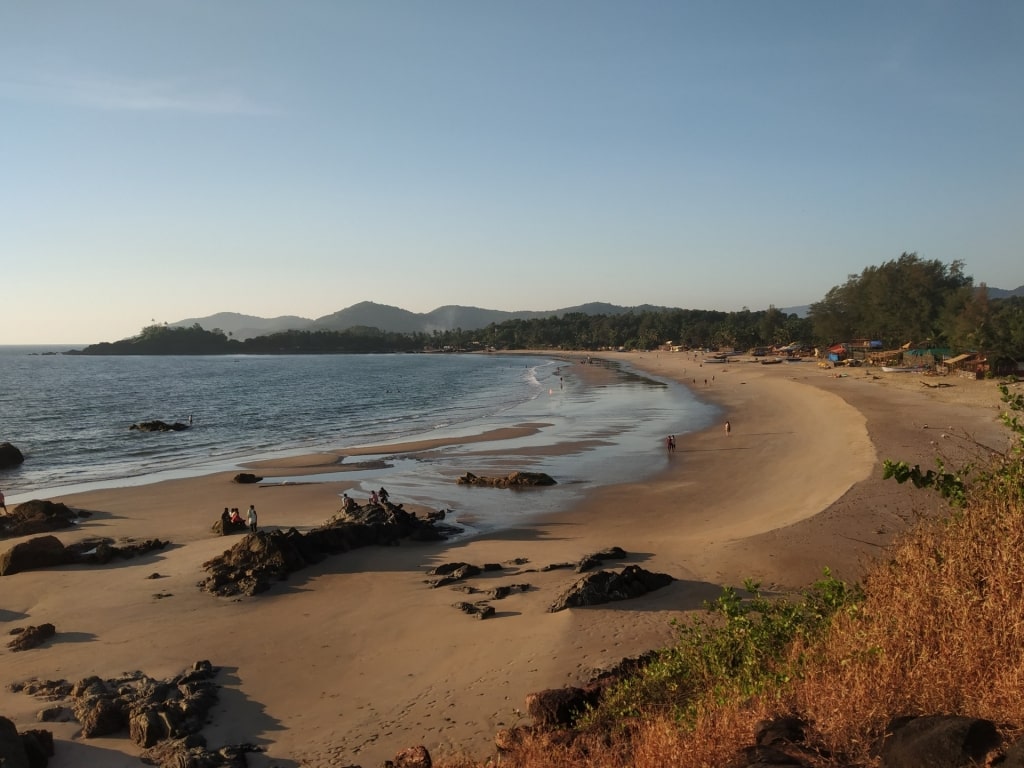
Patnem Beach
Peace and seclusion are the main reasons to visit this dreamy beach, located in the south of Goa. Snooze under an umbrella made of coconut palm fronds, or join a yoga class on the beach.
Head for the toes-in-the-sand Nada Brahma restaurant for healthy snacks, Indian and Thai specialties, salads, pancakes, and vegetarian treats.
If you want to explore, rent a kayak and head out for a paddle. Or do a deal with a local fisherman to take you to nearby Palolem Beach—much livelier—or Butterfly Beach, which is the opposite and completely remote. There’s a good chance you’ll spot dolphins, but be sure to tell the boatman to let you observe them from a distance.
Galgibaga Beach
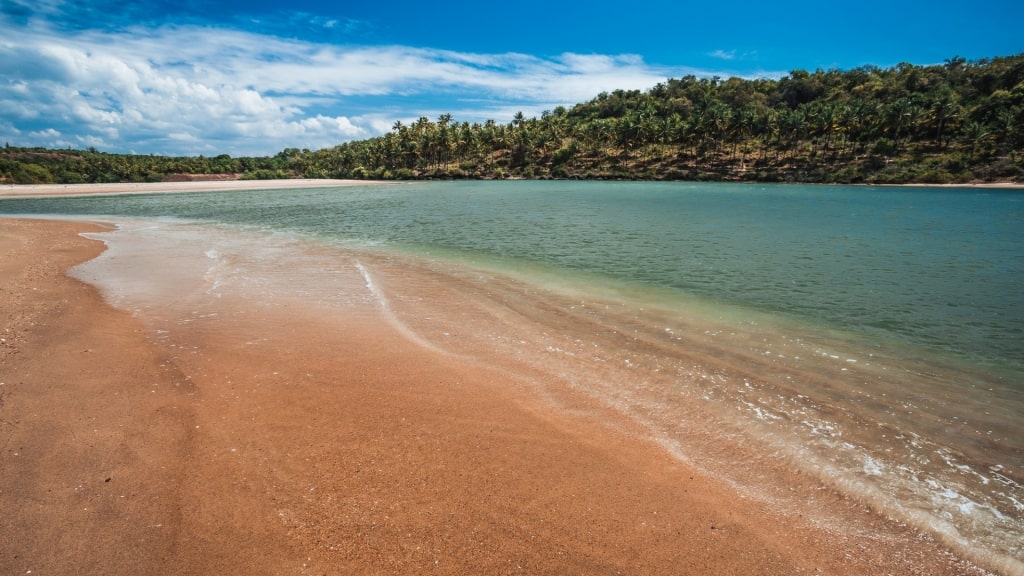
Galgibaga Beach
One of the most remote of the southern beaches, Galgibaga is also known as Turtle Beach as it’s a protected nesting ground of Olive Ridley turtles—one of just three such spots in Goa.
The beach lies at the mouth of the Galgibag River, and one end of it extends into the water as a long, yellow sandspit.
The appeal of Galgibaga is that it’s so quiet. There are no beach shacks here and certainly no nightclubs. Bring a picnic and water, and swim with care as there can be currents.
If you just want to come and take a look and stroll along the sand, you can always head for busier Palolem Beach afterward, which is just four miles away and has more facilities.
Arambol Beach
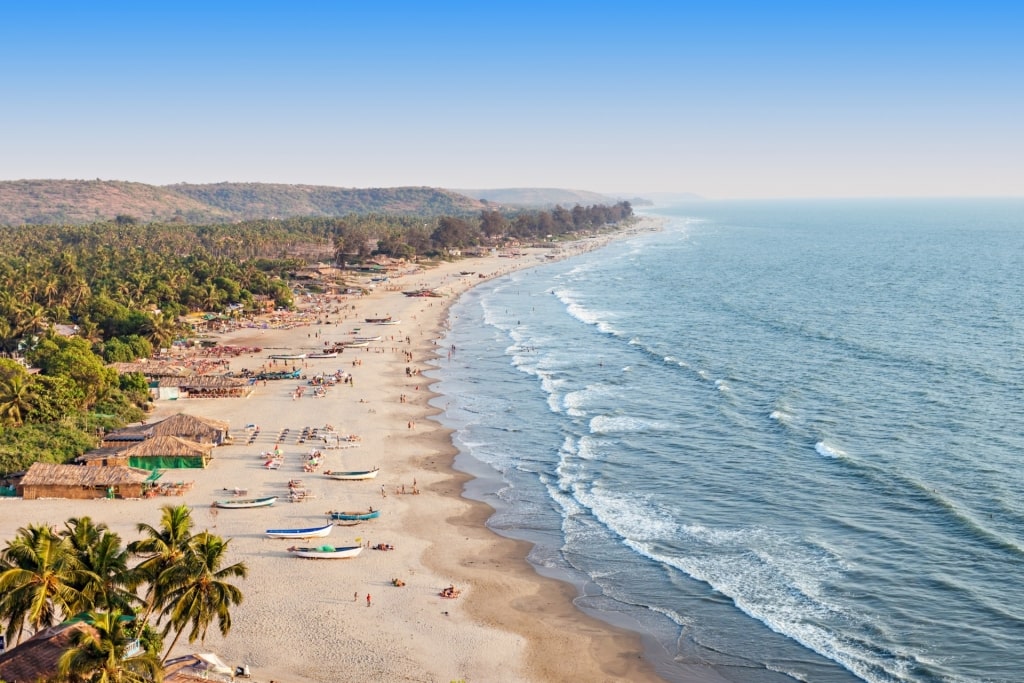
Arambol Beach
With some 10 miles of rippling golden sand, Arambol is considered to be one of the top beaches in Goa. It’s also the furthest north, backed by rocky, scrub-covered hills and low cliffs. When conditions are favorable, paragliders take off from the cliffs, circling on the thermals like giant, dazzlingly colored birds.
Arambol is packed with facilities, although there’s enough space to give the beach a happy, hippie vibe. You’ll find yoga and meditation sessions, reiki healing, foot massage, and hot springs believed to have curative properties. As the sun begins to sink, drumming circles start up their hypnotic rhythm in the golden afternoon rays.
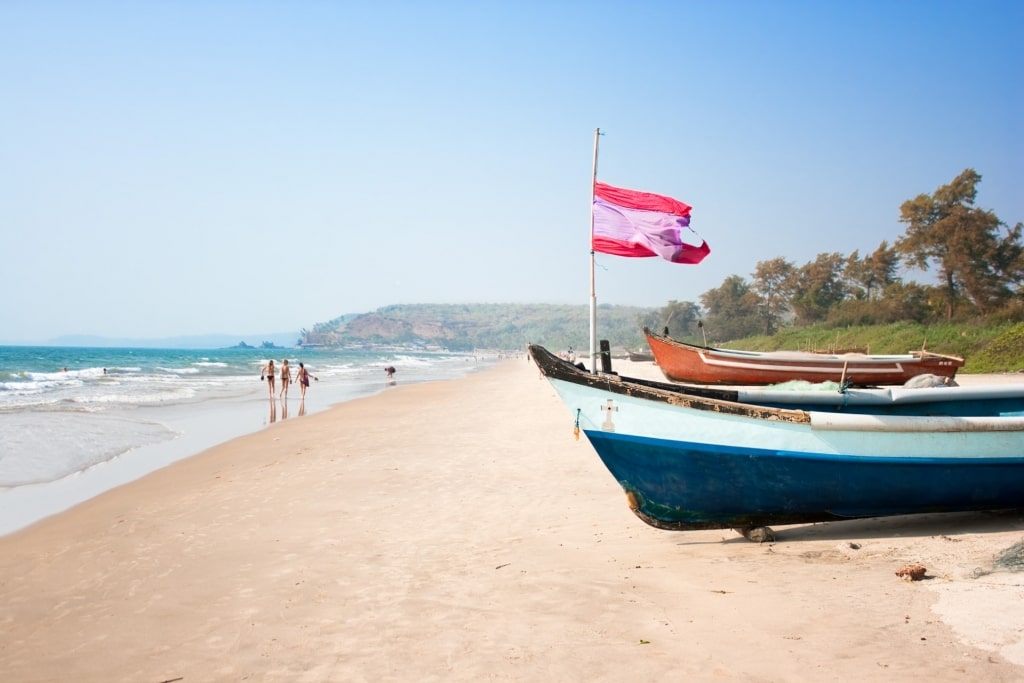
Arambol Beach
Take your pick of beach shacks and enjoy a long, lazy lunch just in front of the gently breaking waves; there’s everything from Goan to vegetarian Indian on offer here, perfect with an ice-cold Kingfisher beer.
Arambol is good for shopping, too, from floaty kaftans to embroidered scarves and the ubiquitous patterned “elephant pants” worn by backpackers worldwide.
Anjuna Beach
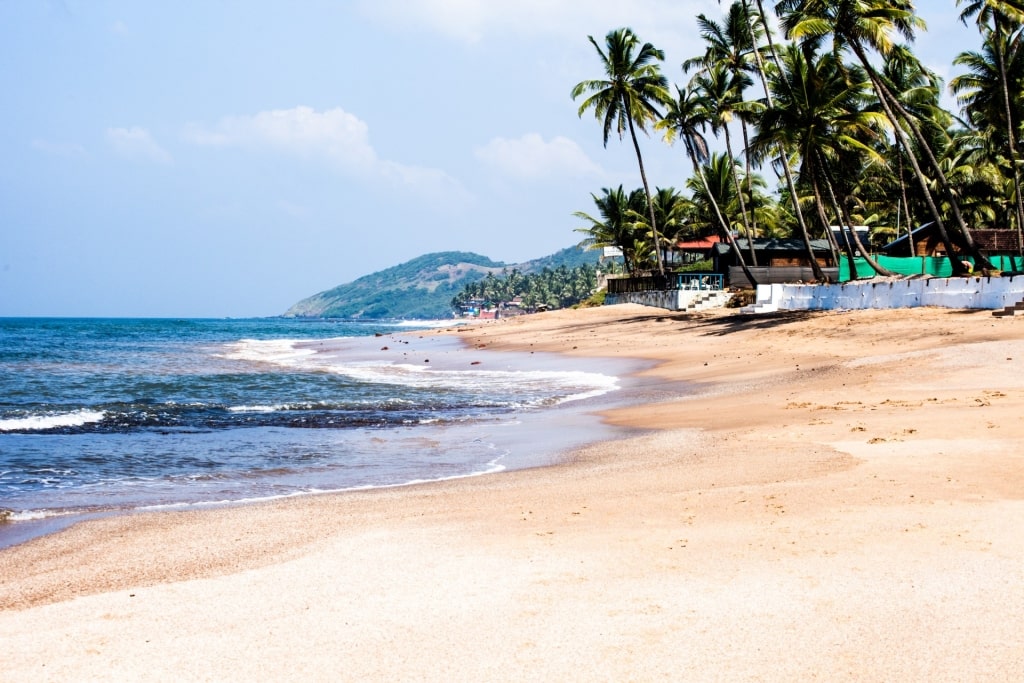
Anjuna Beach
The party scene at Anjuna, in North Goa, used to be legendary, before the government’s state-wide clamp-down on all-night music. There are still clubs and bars all along the beach and big-name DJs perform sets here to a happy, hippie crowd, often in the afternoons rather than nighttime hours.
If you enjoy an Ibiza-style music scene, this could be the place to visit. By day, this is also a top spot for watersports, from windsurfing to parasailing, and it’s popular with families, too.
If you’re visiting Anjuna on a Wednesday, head for the Flea Market, a psychedelic mix of clothing, jewelry, spices, paintings, and carvings from all over India. You’ll need to bargain to get a decent price; it’s expected.
Miramar Beach
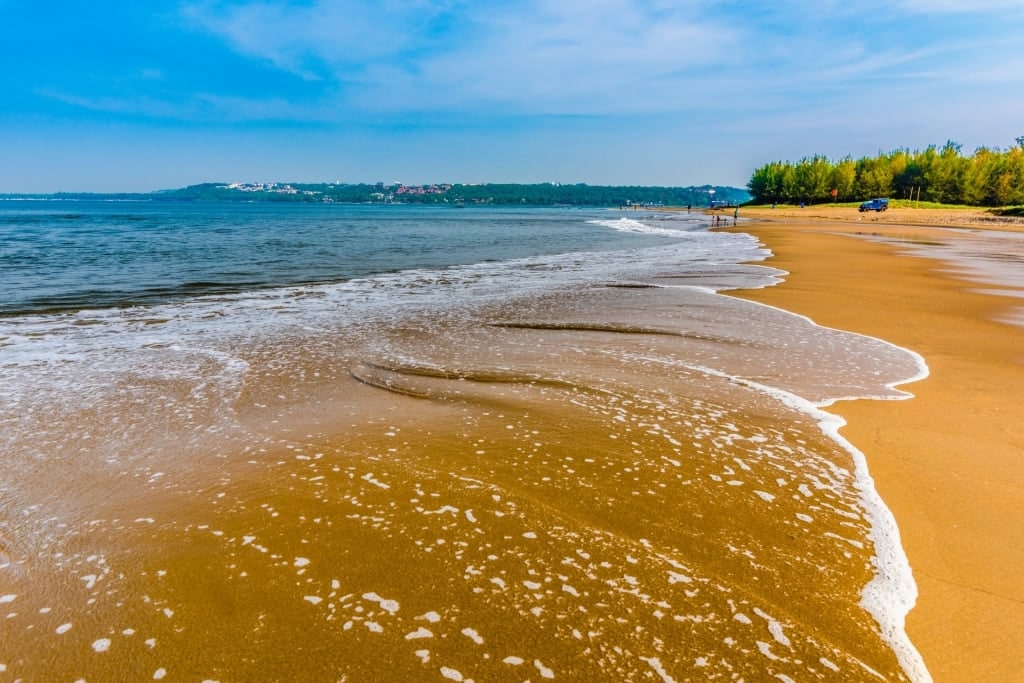
Miramar Beach
While it’s not the best for long open water swimming due to strong undercurrents, this long sweep of golden sand close to Panaji, the capital of Goa, is an easy retreat for city dwellers.
You’ll see all manner of life here. There are families out strolling, joggers, and yogis performing their sun salutations. As the sun begins to sink towards the western horizon, young people arrive for “magic hour” as the bars and lounges nestled in the palm grove behind the beach mix exotic sundowners.
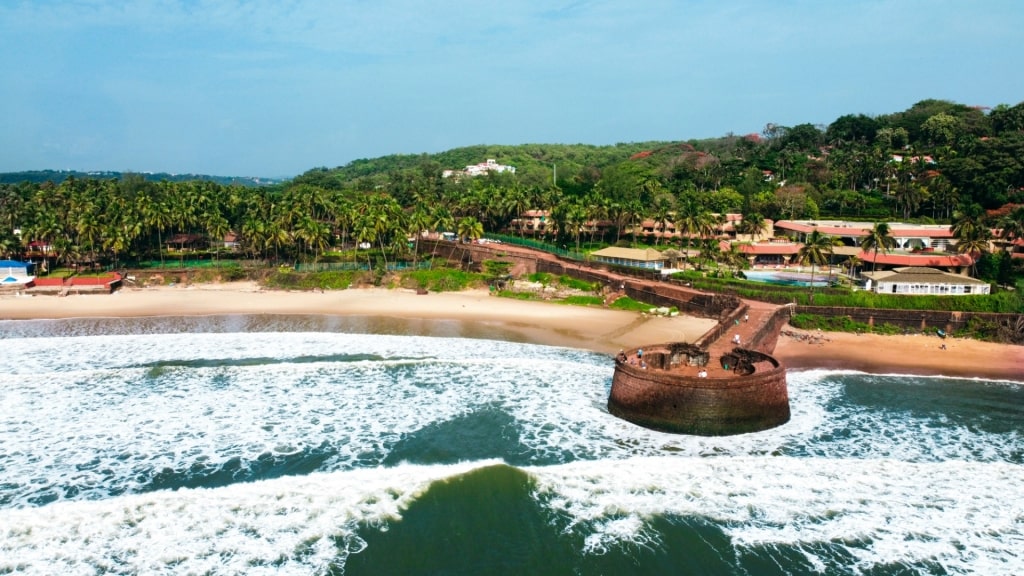
Fort Aguada
The Mandovi River flows into the Arabian Sea close to Miramar Beach, its mouth guarded by the chunky Fort Aguada. And despite its proximity to the city, Miramar has great bird watching in winter, the peak season, with dozens of species of migratory birds flocking to the mangroves around the river’s estuary.
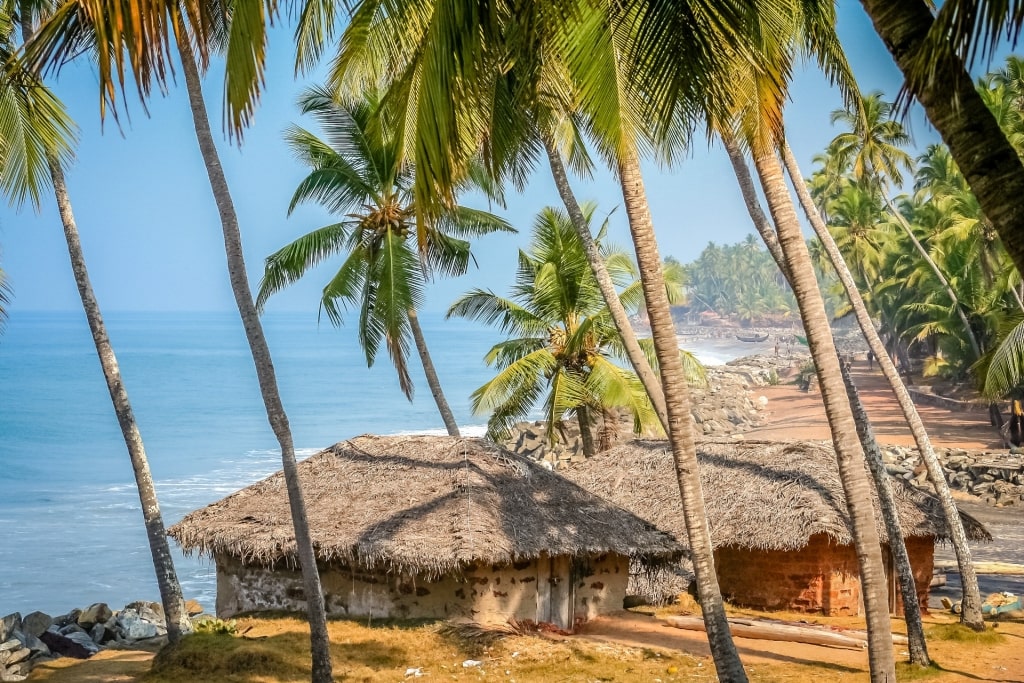
Goa
Ready to head for Goa’s blissful beaches and discover more about this fascinating state? Browse our cruises to Goa and plan your next unforgettable voyage.
